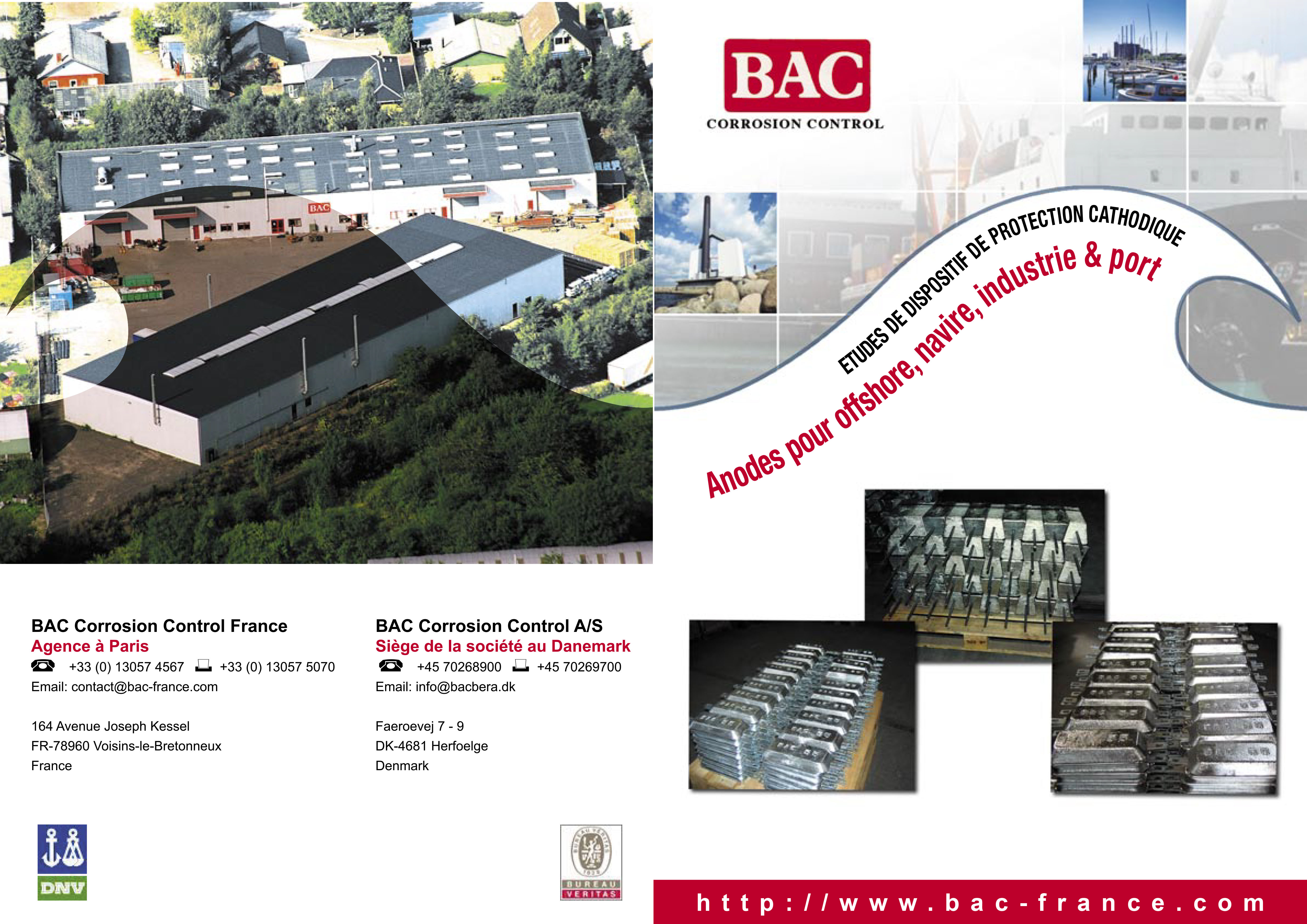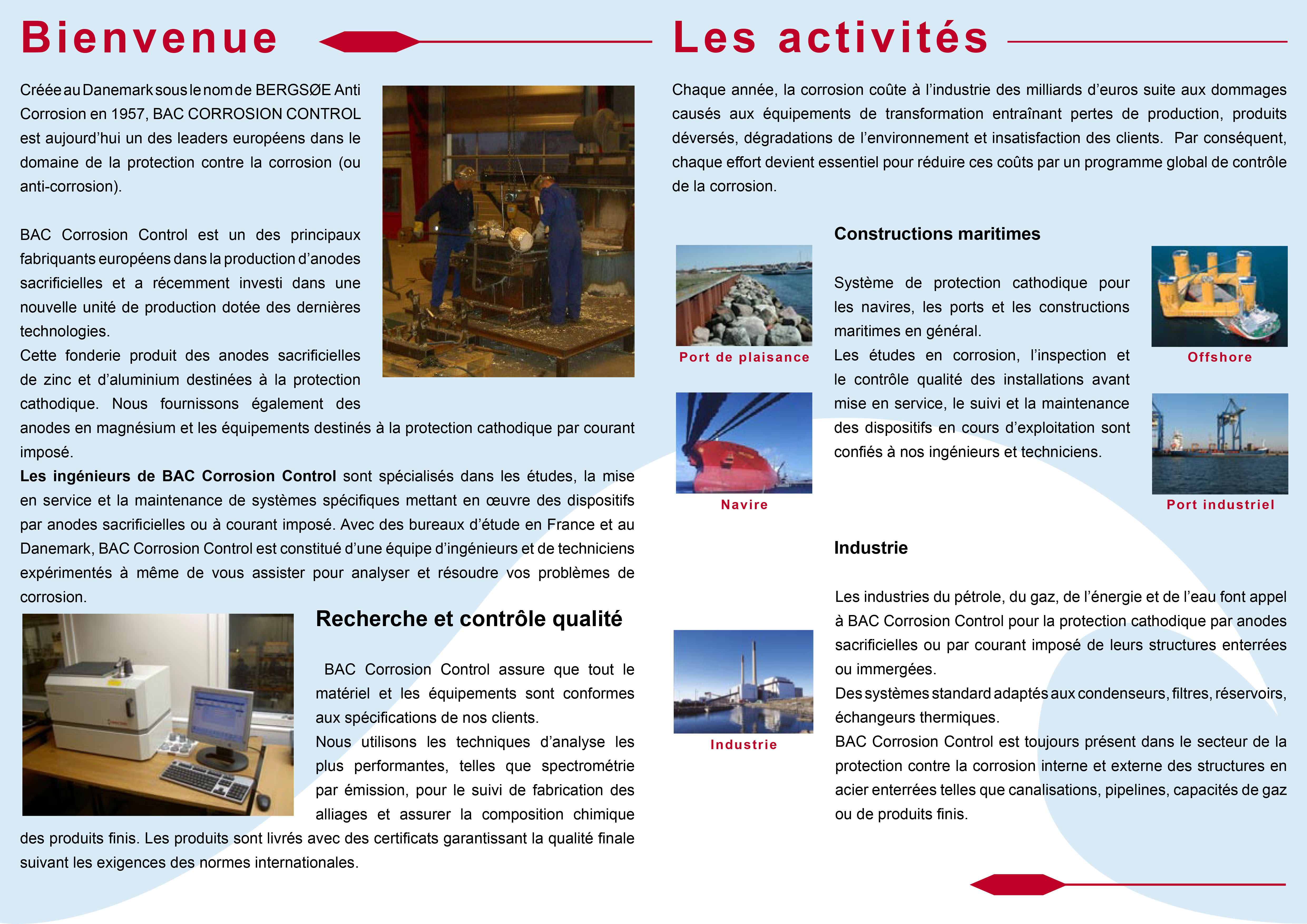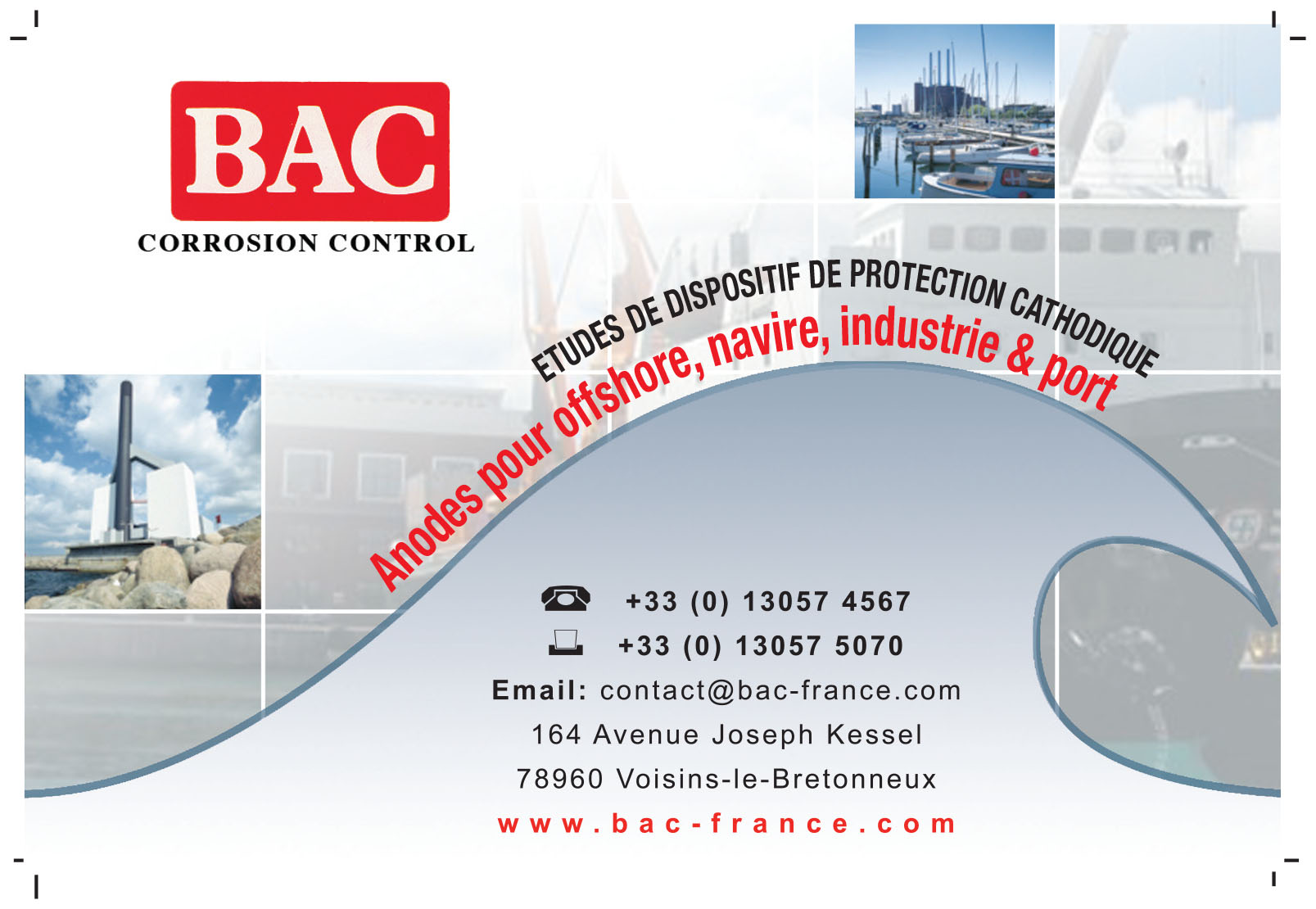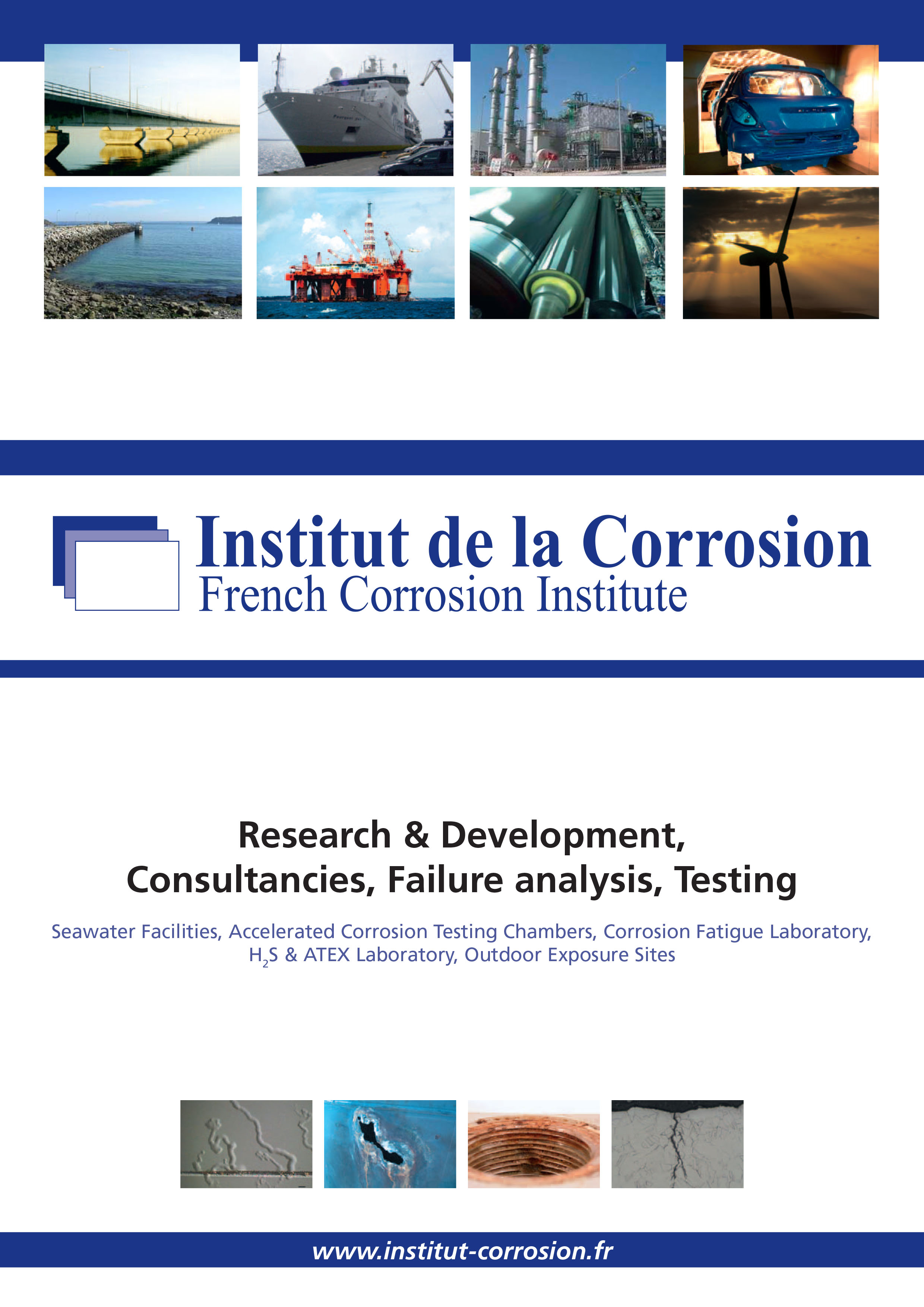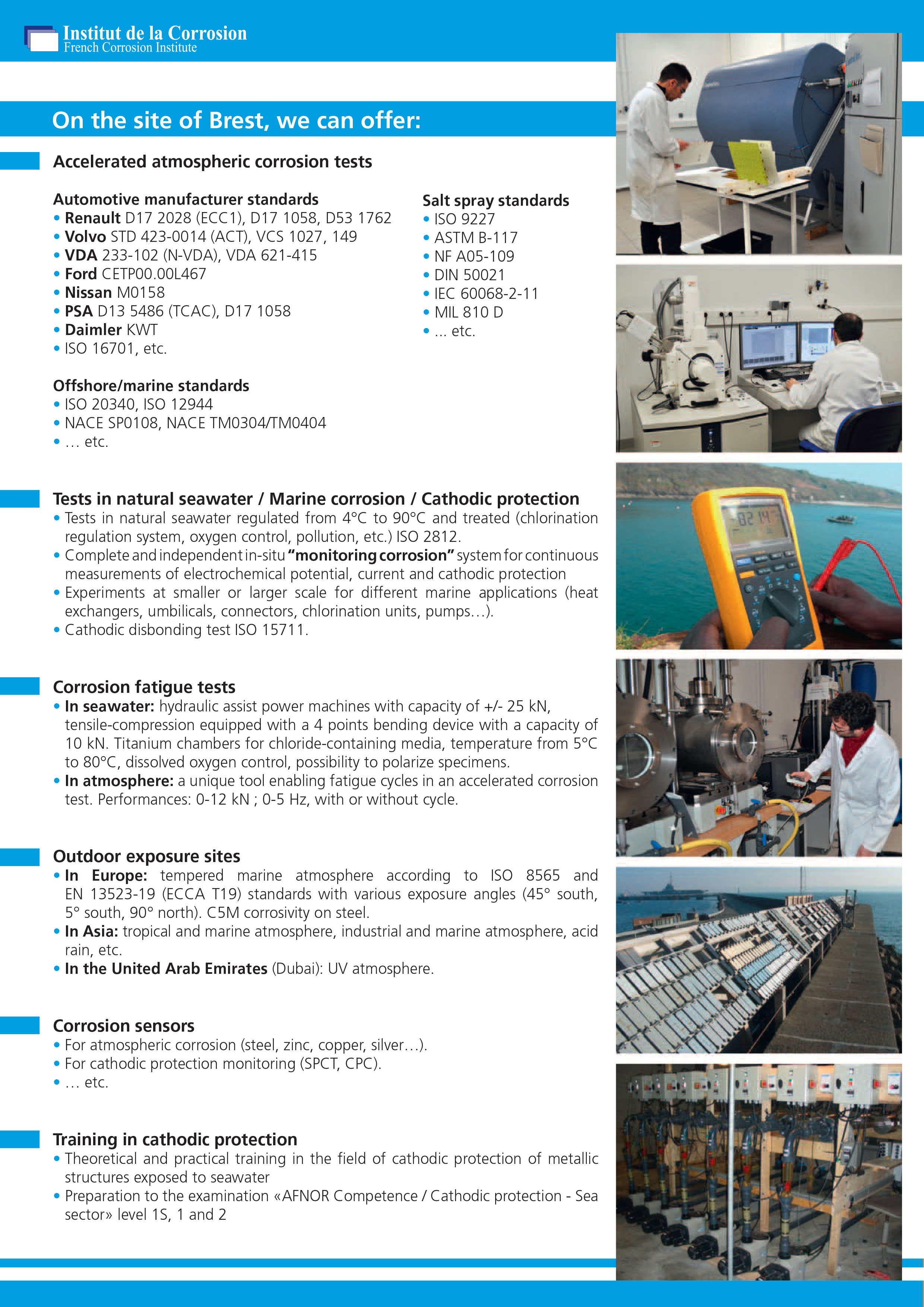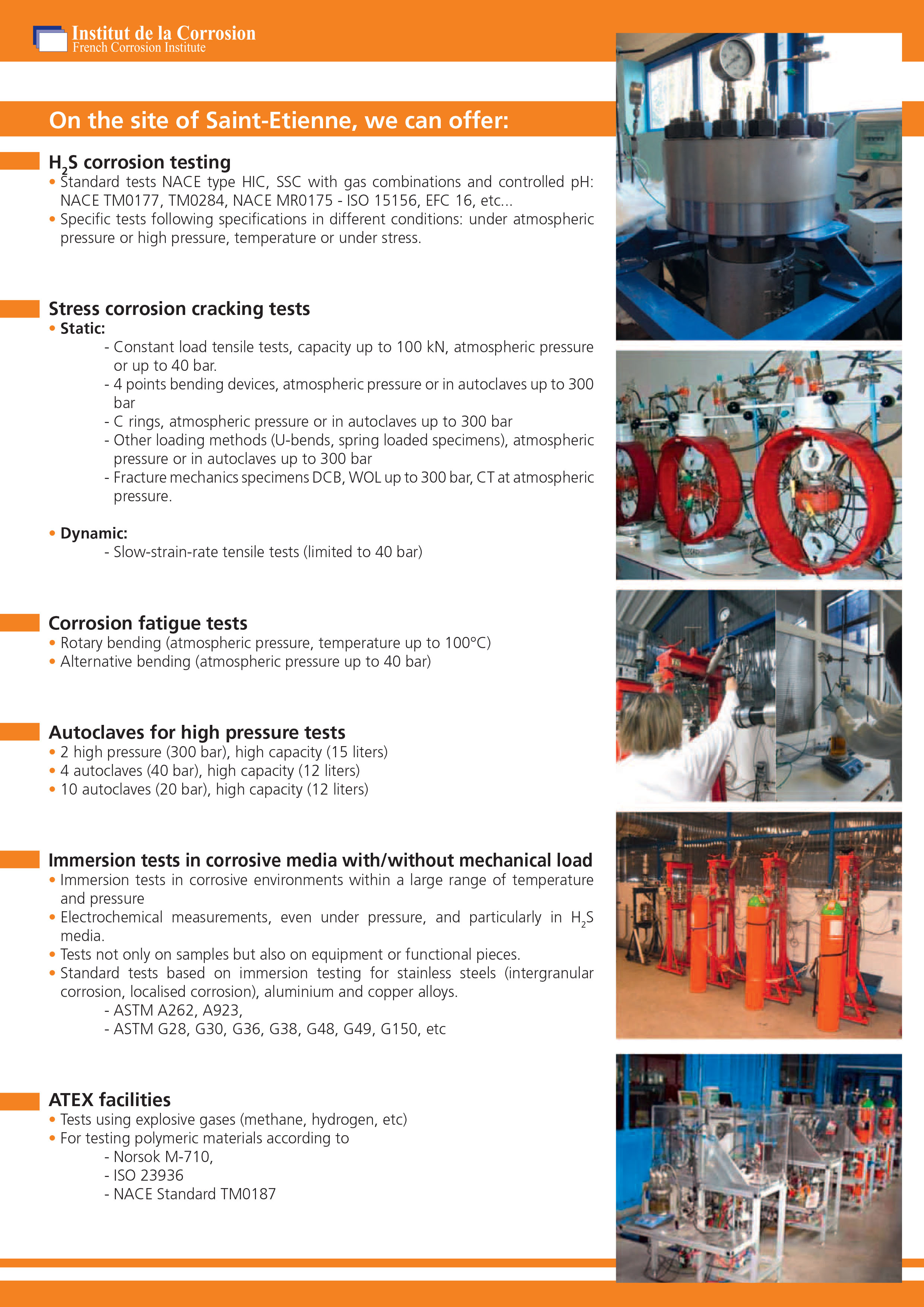Galvanic cathodic protection
Some metals or alloys placed in the same electrolytic environment as the structure to be protected have an electrode potential (measured with respect to a reference electrode) lower than the one of the metal of the structure. When such a metal is electrically connected to the structure to be protected, its potential tends to increase, whereas the one of the metal of the structure tends to decrease, which results in the decrease of its corrosion rate. This method is limited to the electrolytes which have a resistivity that is not very high.
According to the situation, the galvanic anodes (sometimes called sacrificial or consumable anodes) are made with magnesium, zinc or aluminium. In all cases the anodes for cathodic protection must be made of specific alloys which were first qualified by measurements that provide knowledge of their electrochemical characteristics, in particular their reactivity and their polarizability, over the long-term.


Insulation of optional connections (steel or copper nobler than the anode) Insulation of essentials connections (otherwise current exit and corrosion)
Protection by impressed current
In the cathodic protection installations by impressed current, the power supply will cathodically polarize the structure to be protected with a direct current that flows between the structure to be protected and an auxiliary anode called “groundbed”. In remote areas, this current can be generated by windmills or photovoltaic panel systems.
Depending on circumstances, this anode can be made of consumable material (scrap steel), it can be semi-inert (ferro-silicon, graphite, magnetite, lead oxide) or inert (platinized titanium, platinized niobium, platinized tantalum, titanium covered with mixed oxides “Ti/MMO”, conducting polymers).
Comparison of cathodic protection systems
| Parameters | Galvanic systems | Impressed current systems |
|---|---|---|
| Installation | Simple | Relatively complex (electricity) |
| Energy source | None | Essential |
| Current distribution on the structure | Depends on the anodes set-up. Can be designed to be homogeneous. | Risk of non-homgenous current distribution is the coating does not perform as intended |
| Size of the structure to be protected | Possibility of overloaded mass and not well adapted for some structures | Generally without difficulty |
| Influence of the resistivity of the environment | Not possible if the resistivity of the environment is too high (not very conductive grounds) | No limit |
| Anode flow (current density on the anode) | Low | High |
| Number of anodes | Significant | Low |
| Operating flexibility | Automatic regulation or possibility of regulating with resistors | High |
| Risks of over-protection | Virtually non existent except if Mg anodes or if materials very sensitive to H | Possible |
| Interferences with other structures | Low | Possibly high |
| Human risks | No | Possible |
| Monitoring and maintenance | Low but sometimes necessary to periodically change anodes (high cost of protection current) | Regular and specialized |
| Cost | Relatively low investment, high cost of current | Relatively high investment, inexpensive current |


